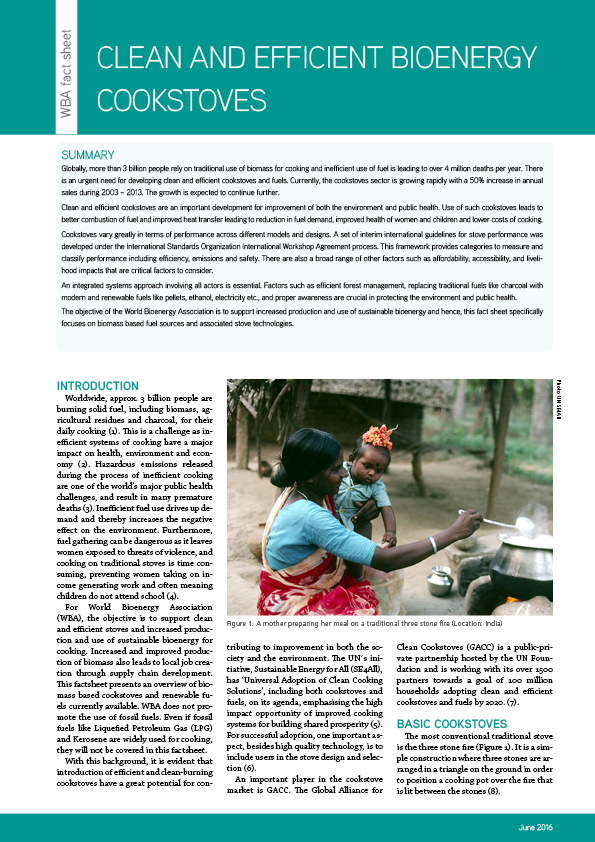Bioenergy Cookstoves
Back to Resources
Published:
2016-07
Summary
Globally, more than 3 billion people rely on traditional use of biomass for cooking and inefficient use of fuel is leading to over 4 million deaths per year. There is an urgent need for developing clean and efficient cookstoves and fuels. Currently, the cookstoves sector is growing rapidly with a 50% increase in annual sales during 2003 – 2013. The growth is expected to continue further.
Clean and efficient cookstoves are an important development for improvement of both the environment and public health. Use of such cookstoves leads to better combustion of fuel and improved heat transfer leading to reduction in fuel demand, improved health of women and children and lower costs of cooking.
Cookstoves vary greatly in terms of performance across different models and designs. A set of interim international guidelines for stove performance was developed under the International Standards Organization International Workshop Agreement process. This framework provides categories to measure and classify performance including efficiency, emissions and safety. There are also a broad range of other factors such as affordability, accessibility, and liveli- hood impacts that are critical factors to consider.
An integrated systems approach involving all actors is essential. Factors such as efficient forest management, replacing traditional fuels like charcoal with modern and renewable fuels like pellets, ethanol, electricity etc., and proper awareness are crucial in protecting the environment and public health.
The objective of the World Bioenergy Association is to support increased production and use of sustainable bioenergy and hence, this fact sheet specifically focuses on biomass based fuel sources and associated stove technologies.

